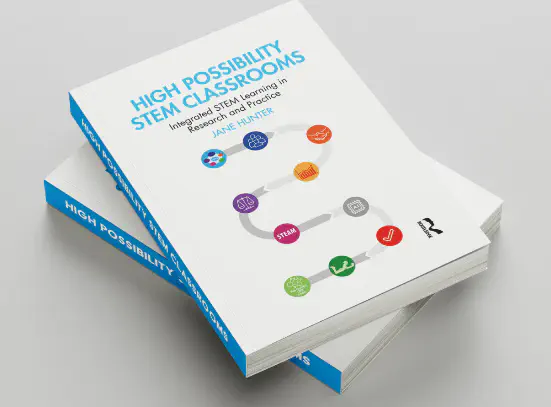High Possibility Classrooms
Integrated STEM learning in research and practice
 Image of research book: High Possibility STEM Classrooms, by Jane Hunter
Image of research book: High Possibility STEM Classrooms, by Jane HunterHigh Possibility Classrooms (HPC) is a framework for pedagogy that supports teachers to think through their planning, the subject matter they teach, and the ways learning can be reimagined through innovative uses of technology to engage and motivate students.
Based on research across a number of schools, it has been adopted in teacher professional development programs and implemented in HPC school classrooms. In these classrooms, students engage in inquiry-learning with real-world problems to come up with solutions together that they share outside their classroom. The aim is to foster critical-thinking and build capabilities for innovative pedagogy.
In one project, students were asked to examine the degradation of a local waterway, which involved conducting their own research, going on site visits, using water testing kits and producing a solution to share. This sort of project “changes the student’s sense of agency and what happens when they apply their knowledge and develop their problem-solving skills”, says Dr Hunter, a former classroom teacher and head teacher herself. Read more in Jane’s UTS Social Impact case study
In the video below hear Jane talk about the Missing E in STEM Engineering for Teachers K 6 to develop an understanding of engineering literacy, the design process and effective pedagogy for classroom practice in K-6.